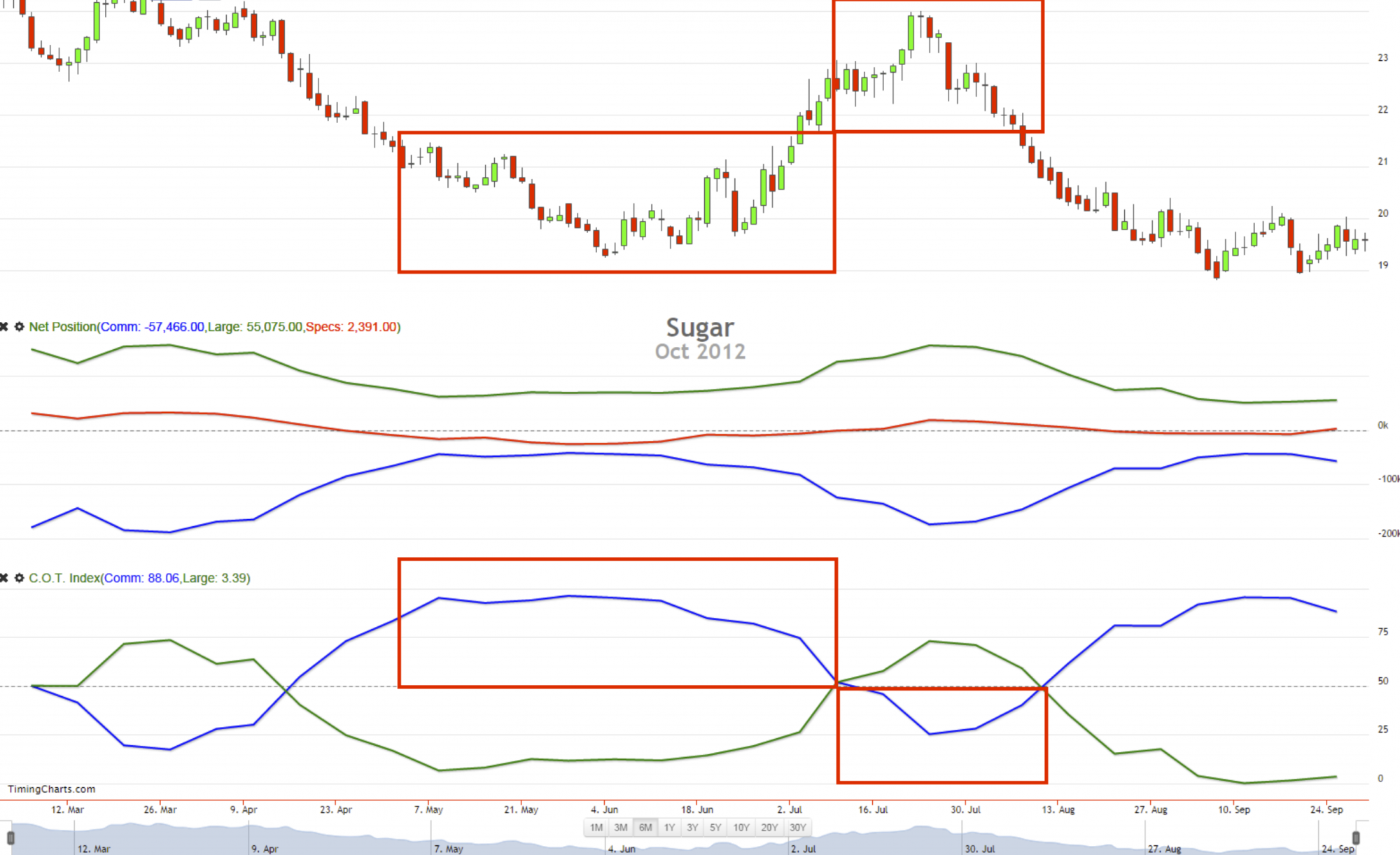Commitment of Traders Report (CoT Report)

Want free insider information on the positions of major market participants such as hedge funds, banks and industrial groups? The CoT Report makes it possible! Check where the smart money is flowing! With the Commitment of Trades Report you trade in the slipstream of the big players. New releases updated constantly on DepthTrade.
The Commitments of Traders Report (also: CoT Report) is published regularly by the Commodity Futures Trading Commission (CFTC). According to the CFTC, it has been produced since June 30, 1962, and since October 6, 1992, the CoT Report has been published in its current form on the CFTC website every Friday at 3:30 p.m. (Eastern Time) or 9:30 p.m. (CET).
Aim of the CoT Report
The CoT Report refers to the trading positions of notifiable market participants in futures transactions. The aim is to create transparency about the positions in the form of a listing of the open interest, i.e. all open futures and options contracts. Every Friday, the positions that exist on Tuesday evening after the close of trading are published. This gives traders an idea of the “positioning” of major market participants.
What is Open Interest?
Open interest refers to the volume of all open futures or options contracts (so-called unconditional and conditional forward transactions) of market participants. It should be noted that the sum of the open interest across all market participants is always zero, since every seller faces a buyer. Even though this represents a zero-sum game, the distribution of positions across different market participants can be very valuable information.
In order to be able to show this distribution, the CFTC distinguishes between three main market players in its report:
- Commercials
- Non-Commercials
- Non-Reportables
If open interest rises overall, this means an increase in trading volume. Analogously, the trading volume falls as open interest decreases.
The different market participants in the CoT report
Since some of the futures traders are subject to reporting requirements, the positions (in the older reports) can basically be assigned to three market participants. In the meantime, the categories have been extended, for more information see below under “extended CoT Report”.
-
Commercials
Commercials describes those traders who appear on futures markets mainly for hedging reasons. Thus, they regularly build up offsetting positions and are commonly known as “hedgers”. Of course, there is a very detailed definition of commercials by the CFTC, which basically consists of two factors: on the one hand, the position held must exceed the prescribed critical number of contracts, and on the other hand, the market participant must have declared himself as a “hedger”.
Example: Commercials are primarily producing, processing or manufacturing companies that hedge on the futures market due to their dependence on commodity prices, for example. One example of many could be large farmers. The important point here is that commercials want to hedge their production costs and do not engage in speculation, i.e. they often build up positions contrary to their market expectations.
-
Non-Commercials
Non-commercials differ from commercials in that they essentially follow a profit motive and have a speculative motivation. Non-commercials are institutional market participants, such as money managers, who fall under the CFTC reporting requirements due to their position size (usually over 20 contracts), but do not meet the criterion of a “hedger.”
Example: Non-commercials are generally performance-oriented institutional traders such as hedge funds, or solvent retail investors who meet the minimum reportable criteria.
-
Non-Reportables
By definition, non-reportables are the difference between open interest and reportable positions – precisely because there is no reporting obligation for non-reportables. Thus, this term mainly hides small and individual market participants.
Example: This category mainly includes private investors. Due to the lack of position sizes and the fact that they often enter trends late, they are colloquially referred to as “Dumb Money”.
Use of the CoT Report
The CoT report can now provide crucial insights into the positions of the various market participants. However, since the sum of the positions must always add up to zero, the question arises as to which of the three participants should be considered in more detail. Here, a common approach is to follow the “smart money” or at least to avoid trading positions contrary to the positions of the smart money. According to the prevailing opinion, the smart money are the commercials. Here, one is dealing with professionals in the respective asset class who have a high purchasing power. If, for example, a company that needs large quantities of sugar for production hedges conspicuously intensively against falling prices, it is likely that this company will assume that prices will fall. The following is an example of this.
Commercials as an indicator for trend changes
A common example of incorporating the CoT report into one’s own forecasts is to consider the net positions of the commercials (shown as a blue line below the price trend). In the following example, a sugar future is shown, below which is the course of the net positions of the three market participants. The trained eye immediately recognizes that the positions must add up to zero and thus the curves always run reciprocally. As a rule, non-commercials and non-reportables take the counter-positions of the commercials.
The approach now is to spot large changes in the hedging positions of the commercials, derive trading tactics from them, and enrich them with other methods such as technical analysis. For example, in sugar futures, we can see that the commercials’ short positions were drastically reduced from May 2012 to the end of June 2012 (even though there was still a small net short position). At the same time, open interest also decreased (all three lines are approaching the zero line). This is an indication that the previous downward movement is very likely to come to an end and lead into a sideways market. An early sign for an upcoming countermovement.
The course of the net positions of the commercials is also suitable for an exit: From the beginning of July, the sell positions of the commercials increased again. The probability of a countermovement thus becomes at least higher and own existing positions can be reduced or closed out if necessary.
The CoT Index
The CoT index is also particularly popular for use in trading. This puts the respective net positions of the three market participants in relation to the high or low of a (self-selected) previous period. This creates an oscillator that fluctuates between two extreme ranges and around a zero line.
Here, the stock change discussed in the previous chart becomes even clearer. The first two red boxes show a high reduction of short positions (below) and the corresponding price trend (above), respectively. The second red boxes show how the zero line was crossed and again increasingly sell positions were built up (below) and how the price trend forms a top in this area (above). Again, this information can be used as an indicator in your own trading.

Ultimately, there is no single pattern or clear guidance on how to use the CoT Report or the CoT Index derived from it, and the examples above are only some of the possibilities. In the end, every market ticks differently. Basically, however, the following applies: Especially for medium to long-term investors, it can be worthwhile to examine the individual underlyings closely with regard to the positioning of significant market participants in order to be able to recognize major shifts.
The extended CoT Report since 2009
Since 2009, the previous report has been supplemented by an extended CoT Report, which covers 22 commodity markets and adds transparency on the positions of market players. The different participants and how they relate to the previous report is listed here:
Producer, Merchant, Processor, User (Commercials).
Swap Dealer (Commercials)
Money Manager (Non-Commercials)
Other Reportables (Non-Commercials)
Non-Reportable (Non-Commercials)
Disadvantages
Due to the characteristics of the report, some disadvantages can be derived, which should at least be considered.
- Future contracts only
As mentioned above, the CoT report only refers to forward transactions (options and futures) and cannot be applied to individual stocks, for example, or only very indirectly. In the area of currencies, commodities or indices, however, the CoT report is quite useful information.
- US reference
It is critical to see that the CoT report exclusively refers to the futures contracts traded in the US and thus only represents a fraction of the total positions. However, the report can certainly still be useful as an indicator.
- Weekly publication
Another drawback is that the data is only published on a weekly basis. Thus, the report is mainly suitable for long and medium-term investors. Day traders will only be able to use the report as an indicator for the institutional sentiment.
